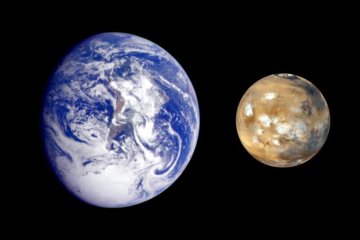All genres
281.
Talk
Asteroseismic measurements of stellar rotation and asphericity. PLATO STESCI Workshop III, Barcelona, Spain (2019)
282.
Talk
Imaging motions in the Sun's interior with helioseismology. Warwick Physics Colloquium, University of Warwick, Coventry, Warwickshire, UK (2019)
283.
Talk
Observations of solar equatorial Rossby waves. Physics at the equator: from the lab to the star, ENS de Lyon, France (2019)
284.
Talk
Comparison of full-waveform and travel-time inversions in helioseismology. 14th International Conference on Mathematical and Numerical Aspects of Wave Propagation (WAVES2019), Vienna, Austria (2019)
285.
Talk
Evolution of Flows around Emerging Active Regions. Astronomical Institute at the Ruhr-University Bochum, Bochum, Germany (2019)
286.
Talk
Evolution of Flows around Emerging Active Regions. 234th Meeting of the American Astronomical Society , St. Louis, Missouri, USA (2019)
287.
Talk
On the latitude dependence of Rossby waves in the Sun. 234th Meeting of the American Astronomical Society, St. Louis, USA (2019)
288.
Talk
Solar and Stellar Interiors. Max Planck Earth System Research Partners Meeting, Mainz, Germany (2019)
289.
Talk
MPS activities and participants. Second Max Planck Partner Group workshop on solar physics, Mumbai, India (2019)
290.
Talk
Exploring the latitude and depth dependence of solar Rossby waves. 2nd Max Planck Partner Group Workshop on Solar Physics, Mumbai, India (2019)
291.
Talk
Seismology of the Sun. Meeting of Heads of Max Planck Partner Groups (Keynote lecture), Mumbai, India (2019)
292.
Talk
Presentation of Director candidate. Meeting of the Chemistry, Physics and Technology Section of the Scientific Council of the Max Planck Society, Berlin, Germany (2019)
293.
Talk
Helioseismology. Institute seminar, Max Planck Institute for Radio Astronomy, Bonn, Germany (2019)
294.
Talk
Observations of large-scale equatorial Rossby waves in the solar interior. GTP Workshop, Boulder, CO, USA (2018)
295.
Talk
Observation of global-scale equatorial Rossby waves on the Sun. ISSI Workshop on Rossby Waves in Astrophysics, Berne, Switzerland (2018)
296.
Talk
Presentation of the Department: Solar and Stellar Interiors. ESRP Meeting; Max Planck Institute for Solar System Research, Goettingen, Germany (2018)
297.
Talk
Helioseismology as a probe of solar turbulent convection. Max-Planck/Princeton Center for Plasma Physics Workshop 2018, Princeton, NJ, USA (2018)
298.
Talk
Equatorial Rossby Waves in the Solar Interior. Dynamic Sun II conference: Solar Magnetism from Interior to the Corona, Siem Reap, Angkor Wat, Cambodia (2018)
299.
Talk
Rotating turbulent convection in the Sun. Discussion Meeting on Turbulence from Angstroms to Light Years. International Centre for Theoretical Sciences (ICTS) of the Tata Institute of Fundamental Research, Bangalore, India (2018)
300.
Talk
What’s next in helioseismology? Future Directions in Heliophysics. New York University Abu Dhabi, Abu Dhabi, UAE (2018)











